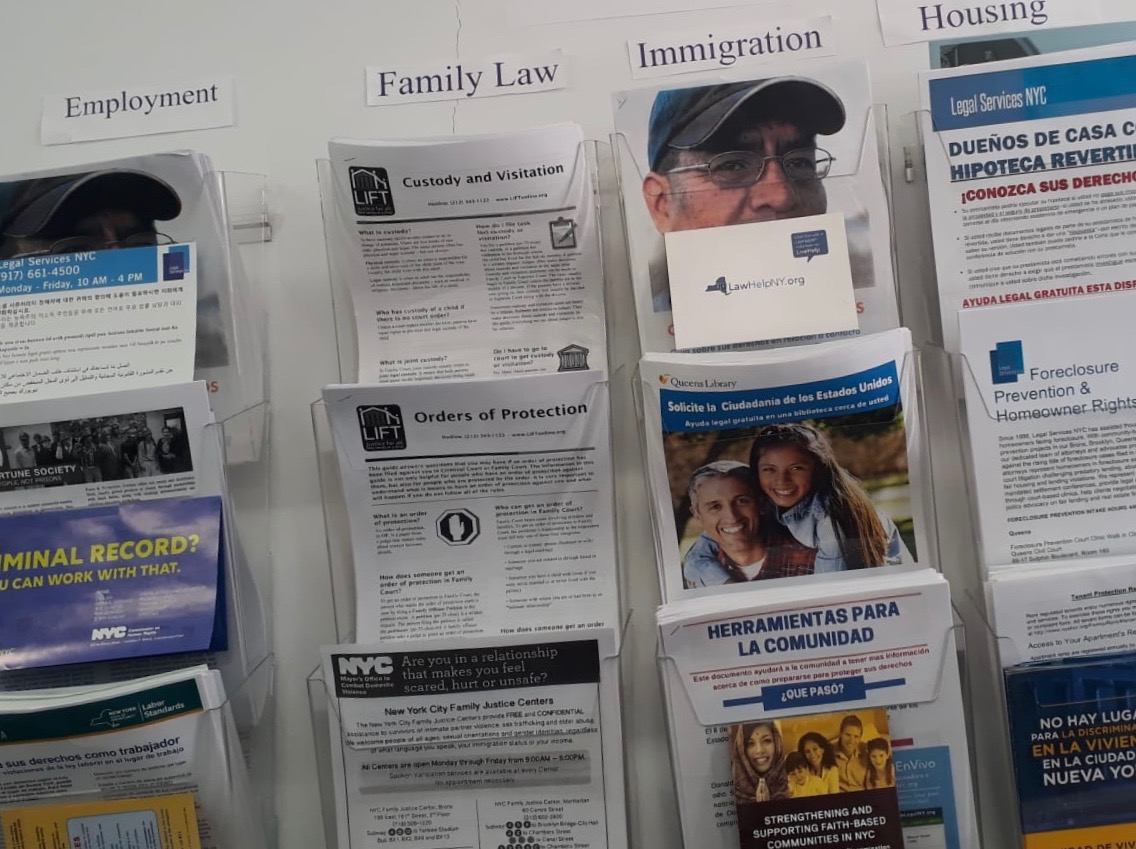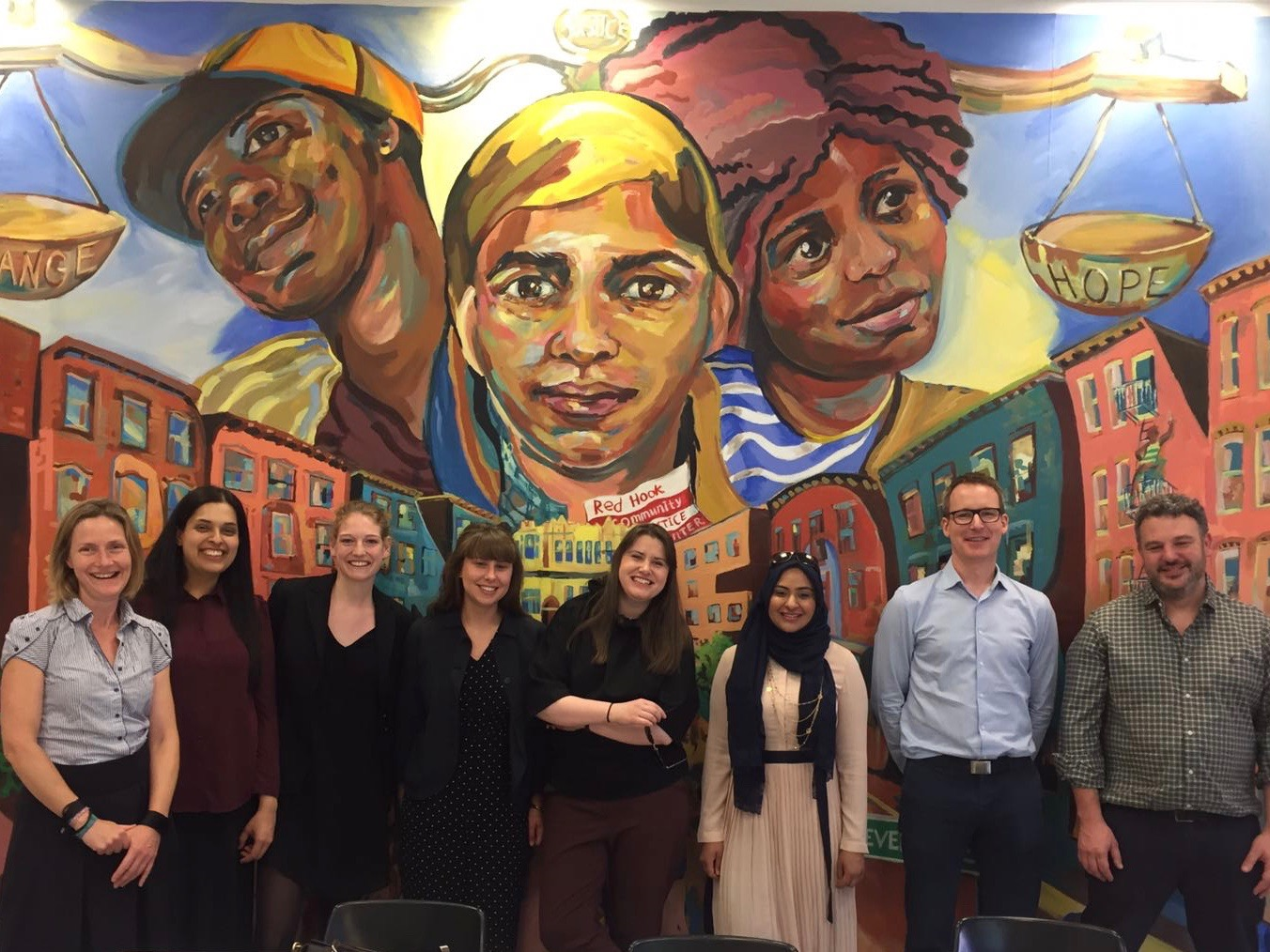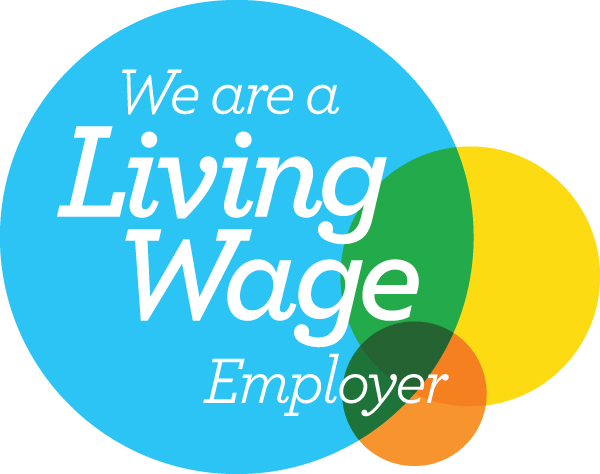Why should only lawyers understand law? Everyone should
May 25, 2018
The first ever cohort of Justice First Fellows has just returned from a learning exchange, where they met public lawyers working in New York.
Nadia Hussain reflects on a busy and thought-provoking trip.
SUNDAY
Arriving at JFK Airport after a long-haul flight from Manchester, there were 200 people in the queue in front of me and two immigration staff. After 90 minutes, I was asked to show my paperwork. The officer said: “You’re bringing business, right?”
In fact, I was there as a Justice First Fellow to learn from American social justice organisations.
MONDAY
After a good night’s sleep, the five other fellows and I, plus TLEF chief executive Matthew Smerdon and Shauneen Lambe, a barrister and founder of the UK youth justice charity Just for Kids Law, headed to Ellis Island by boat. On the way we saw the Statue of Liberty.
The Immigration Museum on Ellis Island

Ellis Island is a must to visit. I was stunned to see how well-funded the museum is. It is a walk through the history of migration into the US. The museum is a fascinating place and is in the actual building where new arrivals were either given or refused permission to enter America. I was surprised as to how busy it was.
Centre of Court Innovation
The working part of the day started at the Centre of Court Innovation (CCI), who were our hosts during the week-long learning exchange. What a fantastic and energised team. They effectively coordinate the state and none state actors. CCI are clearly here to bring social change within the city but they align their interests with those of the agencies they are seeking to change – something which would seem an impossibility for UK lawyers to achieve with, say, the judiciary or Home Office. The organisation clearly has a lot of influence at all levels, and this became more and more apparent throughout the week.
CCI’s meticulous planning was phenomenal. It was seamless. We visited at least two different places a day, across the entire city, and without our hosts Gyulnara and Ignacio, who were with us every step, this would have been unachievable.
Judge Lippman
In the afternoon we had lunch with Judge Lippman, former Chief Judge of New York, who is a champion for equal access to justice across the city. Two things he said stuck in my mind: everyone deserves equal justice – money or not; and we need to get it in to the DNA of the new generation of lawyers to do pro bono work. This was phenomenal to hear. UK City firms are sometimes criticised for being mainly interested in their own profits, so to discover that Judge Lippman advocates to those at the highest level that they should work to benefit those less advantaged was a breath of fresh air. He’s a really inspiring person and radiates hope.
Urban Justice Centre
We then visited the Urban Justice Centre. I was already beginning to notice something about these organisations’ office spaces, which was reinforced throughout the week. They make their workplaces not only a nice place for the staff, but very welcoming for their client group, too. This is a stark difference to law centres across the UK, where no investment takes place in the fabric of the office, which can make the surroundings dull or even bleak for staff and clients. And also the locations: a lot of these premises are within the city – alongside the mainstream financial institutions – which is unheard of in the UK. They make their presence strongly felt, simply by their actual locations.
The UJC is a community organisation which is effectively a shell for several projects which came with funding. So the projects – there were about 10 – share the building and its costs. The one we saw protects the rights of the street vendors who are dotted throughout the city, and had been there for 16 years. Projects in the UK are very short term, I feel – and so is their funding, but the longevity of the projects here was amazing.
William Kunstler
In the evening we met two sisters – daughters of the controversial lawyer William Kunstler. We watched a film they had made about their father’s work. It was really moving. It was made up of home movie clips from their childhood, and also showed his life as a lawyer, and how he had a love-hate relationship with the public. They both run a production company which documents injustices within the criminal justice system. A big, big theme which I took away from the week was the innovative use of media within the law. Law is often viewed as out of touch with the wider public, but their films help dispel this image and it’s something that UK lawyers should consider doing more, too.
However, I began to realise as the week went on that the issues that were being addressed were on a city level only – not across the whole of the state. Each city or state has its own authority and maybe this is why the organisations we visited are so successful – because they don’t have to influence policy on a state level (apart from organisations like the American Civil Liberties Union). If we in the UK want to influence a change of policy, it would be on a national level and therefore more of a challenge.
TUESDAY
Bronx Defenders Unit
Tuesday morning started with a visited to the Bronx. The Bronx Defenders Unit has a multi strategy approach. Their role is to provide legal advice and representation but they aim to cross-train every staff member so that everyone can get a better understanding of the different issues affecting a client. For example, they had social workers trained in house – they call it defence social work – how amazing is that! They had an excellent relationship with the community and this is probably why they do such a good job – because they understand the community needs.
District Attorney’s office
We then had lunch at the District Attorney’s office with a prosecutor called Ayesha who previously worked for the CCI. She sees her role as an ethical prosecutor and is from the community. She said she had a lot of negativity from her family and community at first, because they saw the courts as their enemy, but since joining the DA’s office, she has facilitated a better understanding of the judiciary on a community level. She acts as a link between both: she can transmit the community’s view to the state and vice versa. It must have been a brave move for her, but it’s working.
Litigation Training
We then had two hours of impact litigation training in the afternoon which was hosted by Shauneen. Shauneen has a decade of experience with Just for kids law and was the lawyer behind JfK’s intervention in the Tigere Supreme Court challenge over university tuition fees. Shauneen showed us how she has used the media to work in her favour in the UK. The training was invaluable for seeing how use of the media could work in the UK.
WEDNESDAY
Chase – ACLU
On Wednesday morning we met Chase, a really inspiring lawyer from ACLU. A key thing I took away was how the role of the lawyer isn’t just drafting and advocating in court but as a story teller and someone connected to wider and broader public change. ACLU partners with actors and artists to empower communities and build long term change. Chase’s work routinely involved impact litigation, lobbying, campaigning, and using the digital and social media platforms to raise a case profile. He showed us how the actual tool in a lot of the cases is the humanity of the client – so you’re essentially going back to basics to draw public attention to a client’s case.
Chase made it feel as if the power belonged to the community and the client himself, which isn’t how it often feels here in the UK. He told us to just be brave in our work and said it’s better to do something and then ask for forgiveness, rather than seek permission before hand. I like that!
Legal Hand

Information about legal rights available for visitors
In the afternoon, we were at Legal Hand which replicates the Citizens Advice model here in the UK and felt very British (apart from the weather, which had hit 35c).
Legal Hand sees over 8,000 people a year, but what was key was that in order to protect clients, they don’t usually keep client records because their buildings are open to inspection by the immigration officials. A nice phrase I picked up from here was: why should only the lawyer understand the law? Everyone should. I agree with this. The law applies to everyone, so why isn’t it easily understandable to everyone? (In my head, I was beginning some sort of movement to demand it be made compulsory that the language used in law is clear and simple enough for everyone to understand.)
Make the Road
We then met another community-based organisation called Make the Road. This is in Jackson Heights in Queens. The name comes from Antonio Machado, a Spanish poet and activist: “Wanderer, your footsteps are the road, and nothing more; wanderer, there is no road, the road is made by walking. By walking one makes the road, and upon glancing behind one sees the path that never will be trod again. Wanderer, there is no road. Only wakes upon the sea.”
One of their main aims it to develop the community’s ability to lead the organisation. This is a really beautiful thing. I was astounded to see they had over 22,000 members. As soon as you walk in, you are blown away by the colourful murals and really warm and inviting offices. They offer multiple services: for example, they have health workers; they give food vouchers; prepare meals; host English classes and youth programmes – and we walked away with a really helpful deportation defence manual, too.
Just Fix NYC
In the afternoon we were giving a presentation by Just Fix NYC, which is a relatively new organisation – under three years old. We were all left speechless. It’s a tech-based not-for-profit, which helps tenants facing housing problems to upload images of their disrepairs and then navigate through the legal system. It’s an app that does this, which was revolutionary to us Brits. It was just unbelievable – on a different spectrum altogether.
We have to replicate something similar in the UK to overcome the difficulties in accessing housing law advice, or even in immigration. The aim of the tool is to simplify how evidence is presented to the authorities, making it clearer for both parties and less time consuming in terms of case management.
THURSDAY
Red Hook Community Justice Center

Nadia (second left) and the rest of the Justice First Fellows visiting Red Hook Community Justice Centre
On Thursday morning we drove over to the Red Hook Community Justice Center. This used to be a busy port community, but after the 1950s there was a huge decline in employment and public services resulting in a high crime rate. It became a dumping site, with a large low-income population with high levels of drug use.
We watched a live hearing and it was so refreshing to see what was happening in the courts. Alternatives to incarceration were used: for example, a defendant had carried out 10 weeks’ of drug testing monitoring and this was reported back to the courts. The judge congratulated him, invited him to the bench, shook his hand, and handed him a certificate, while everyone in the courtroom applauded. We had the chance to speak to the judge over lunch. He said they are taking a problem-solving approach, where the judges have almost a social worker role and will look behind the crime, work out a defendant’s social circumstances, and take these into account. Almost everyone was unrepresented, but the judge showed no prejudice and made the defendant feel respected. The judge told us how he had seen a reduction in crime and that the same clients were no longer being recycled through the justice system. It was a really refreshing to see this attitude in the judiciary. There are now approximately 70 community courts in the country and 13 internationally. This practice needs to be implemented in the UK, where the size of the prison population and cost to the taxpayer is always an issue. It a real public cost-saving exercise.
CUNY school of law
In the afternoon, we headed to CUNY school of law where public interest lawyers are trained. This seemed novel to us and should be advocated for in the UK. At law schools here, most people seem to aspire to work for magic circle firms doing corporate work, and this would be a really good way of generating new public interest lawyers. The law school was modern through-and-through, and very well financed. They even rented out spaces to newly practising lawyers.
FRIDAY
George Kendall
Friday was our last day and we headed to Rockefeller Plaza to a commercial firm (swanky offices!), and met George Kendall to hear about their pro bono work. We asked what the business case is for defending, for example, a death row appeal and he said that these cases become highly publicised and in return this generates more paid work. This seems very logical. His ideology is that the wealthier law firms have a core duty to help the poor and in general this was the theme throughout the week: those with more power and deeper pockets had a greater sense of responsibility towards aiding charitable work in the city. This ethos is a part of the culture in the city and needs to be encouraged here in the UK to win better funding and a stronger voice for this area of work.
It was our final day, and it was intensely packed, but I wouldn’t have wanted it any other way. I highly recommend the learning exchange to all the fellows, and I’m sure as time goes on I will draw on more and more of what I have learnt and hope to apply this in practice.
Nadia Hussain is a Justice First Fellow and solicitor at Greater Manchester Immigration Aid Unit.
